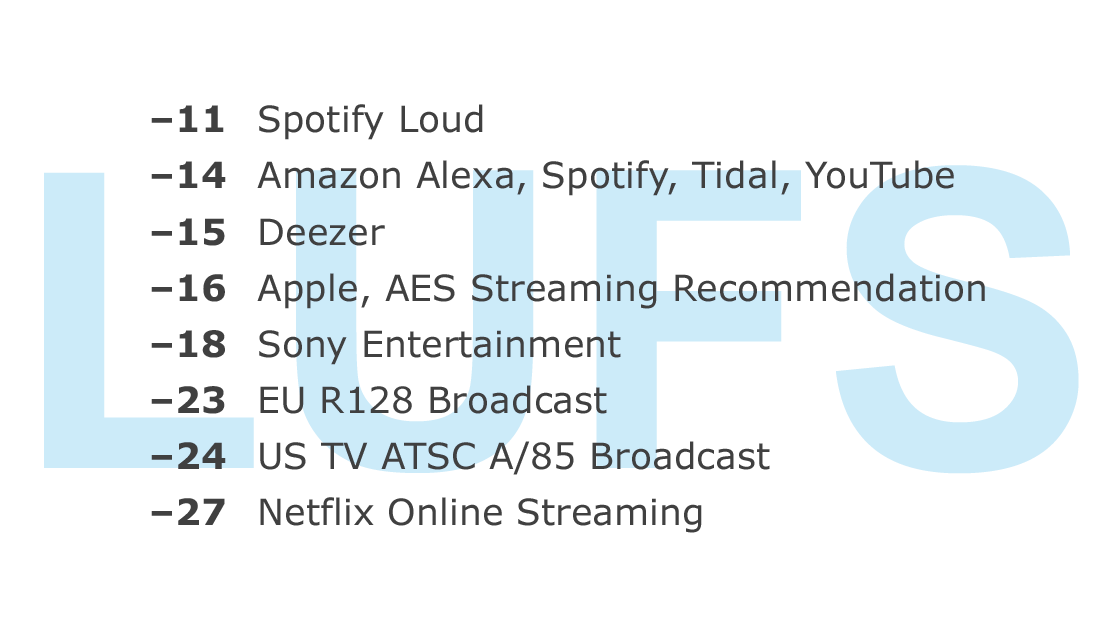
Speaker Calibration
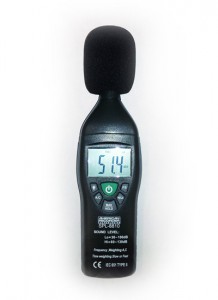
Importing Session Files


Normalize your dialogue
Level out all the dialog so it falls within the target range of -11db to -10db. This is a rough guide point, quiet sections may fall a tiny bit below this to -11.5db, but I suggest not going above -10db for your max dialog peak. Measure this with the dialog solo’d. I tend to group all of the dialog tracks to a bus for control of all of them in case I need it, this can be handy to use as a side chaining source key for tastefully compressing background music.
Audio restoration
Once you have normalized all your dialog to that -11db to -10db range, you will most likely find a lot of undesirable background noise. This will vary from generic noise floor hiss, to crew talking in the background, or crew dropping things in the middle of a scene, or crew footsteps in the background during quiet scenes, or large motor vehicles driving by, or planes flying over head, generators or air conditioners kicking on, or even the mic cable not being taped to the boom and rattling against it… I think you get the picture.
ADR or Looping
After all your restoration work you may encounter some dialog that is just irreparable and completely unusable. You will have to get the actors into the studio to re-record their lines. This is called ADR (Automatic Dialog Replacement) or looping. This is a trick in itself as you need the new dialog to sync up with the lip movements on screen. I will write more about the process of ADR at a later date, but in summary, you will need a quiet studio, preferably a larger room to record in, a screen for the actor to watch the scenes on, and preferably a screen with the wave files visible to them as well.
Foley | Sound Design | Music
Now that you have fixed all the problems with your dialog tracks, you can reward yourself by doing some Foley | sound design work and Music. Make those fight scenes really grab your attention, add footsteps, doors closing, car and other vehicle sounds. Have fun in this section. You can then add music to capture the emotion of the audience. I would suggest that your max peak for your loudest effects be around -5db for the loudest stuff like explosions and gunshots, but mix to your preference.
Audio Mix Level Targets
One of the most popular questions that I see when people are getting into mixing sound for the film is; “What should my levels be?”. One test you can do to answer the question for yourself or to validate the answer I provide here is to pull a .mov or .mp4 version of a Hollywood large budget movie into your DAW and watch your loudness meters as the movie plays. You can see the levels where the dialogue sits, the music, and the sound effects.
Here is what I learned from that experience summarized in one easily digestible chunk. All levels dBFS peak.
- Max peak: -2db (This was absolute on everything that I tested probably because of BS1770-3/A85)
- Loud sound effects (explosions, gunshots): -3db to -2db
- Louder soundtrack or score music not competing with dialog max: -5db to -4db
- Dialog level: -11.5db to -10db
Use these as reference points. Start with getting your dialogue levels first, and then build everything else around that. These are not hard rules (aside from the max peak of -2db) but a foundation on which to build your audio mix. I found this to work consistently well for me and puts me right in the ballpark to be compliant with the broadcast standards established by the CALM act (BS1770-3/A85)
If you are part of the vast audio production community that provides content for broadcasters or streaming services, you are constantly faced with different requirements to comply with various delivery standards.
In recent years, adhering to specific loudness standards has become increasingly important, and these days, loudness is part of practically any audio spec sheet.
But depending on the distributor, geography, content type and more, the loudness LUFS requirements can differ, and it can be hard to find out exactly which standards are relevant for each situation.
Please note that the present list may not be complete or 100 % updated at all times. Delivery specifications and standards may be updated occasionally or new ones may emerge, and we will of course update this page accordingly as soon as this should happen and it comes to our attention.
Global
|
|||
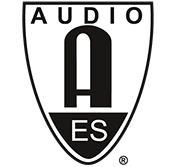 |
Recommendation for Loudness of Audio Streaming and Network File Playback TD-1004 | ||
| Loudness Type | AES Streaming | ||
| Integrated (I) | –16 to –20 LUFS | ||
| True Peak (TPmax) | –1 dBTP | ||
| Reference: AES Technical Document (befindet sich in Überarbeitung) | |||
| Please note: A −20 LUFS lower limit has been chosen as the lowest current practical value for streaming, as some current mobile devices have insufficient gain to allow the common production targets of −23 or −24 LUFS to be heard at a satisfying loudness even if the volume control is turned all the way up. | |||
 |
CTA: Loudness Standard for Over the Top Television and Online Video Distribution for Mobile and Fixed Devices | ||
| Loudness Type | ANSI/CTA-2075 | ||
| Integrated (I) | Per AES-71, Annex D * | ||
| Reference: ANSI/CTA Standard | |||
| * The AES71 RP is recognized in ANSI/CTA-2075 so that content produced and distributed using its guidelines will be compatible with the various benefits of ANSI/CTA-2075. AES71 content playing back on a device compliant with ANSI/CTA-2075 will offer an optimized listener experience regardless of the listening transducer device (micro-speaker, headphone, television, home theater) or environment (indoor or outdoor). |
|||
| CTA and the CTA logo are trademarks of the Consumer Technology Association, U.S. | |||
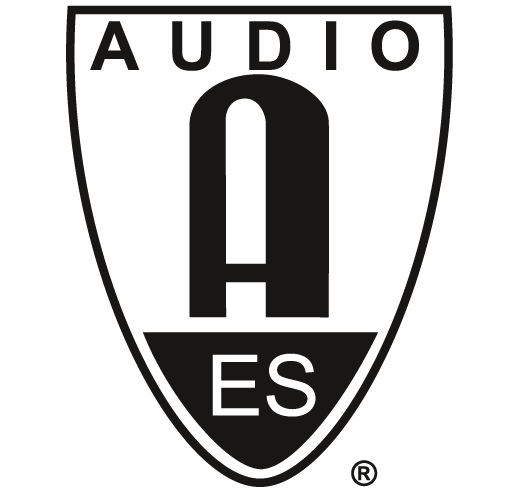 |
Recommended Practice Loudness Guidelines for Over the Top Television (OTT) and Online Video Distribution (OVD) AES71 | ||
| Loudness Type | AES Streaming | ||
| Reference: AES71 Standards Document | |||
| Please note: AES71 recommends the use of regional television loudness values as mentioned below and refers to the regional standards. In addition, the Integrated Loudness value shall not exceed –16 LUFS/LKFS and –1 dBTP (TPmax) (not applicable for Japan). | |||
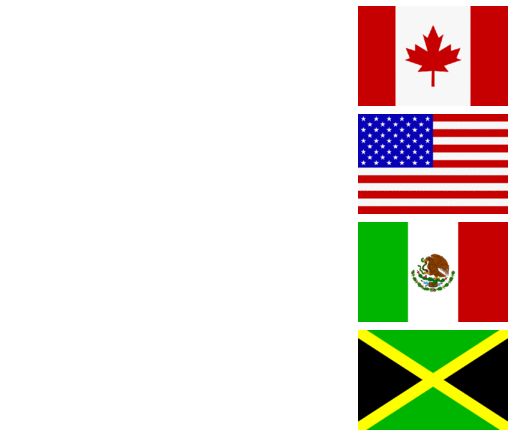 |
Standard | ATSC A/85 | |
| Integrated (I) | –24 LKFS (±2.0 LU) | ||
| True Peak (TPmax) | –2 dBTP | ||
| Reference: ATSC A/85 | |||
| Please note: Full program Mix Measurement is recommended for Short From Content, Anchor Element (Dialog) Measurement is recommended for Long Form Content (conditionally Full Programm Mix Measurement) | |||
 |
Standard | EBU R128 | |
| Integrated (I) | –23 LUFS (±0.5 LU) | ||
| Short Term (Smax) | –18 LUFS/+5 LU | ||
| True Peak (TPmax) | –1 dBTP | ||
| Reference: EBU R128 | |||
| Please note: Anchor Element Measurement for Long Form Content is conditionally permitted for wide dynamic range content. Short Term value is valid for Short Form Content only. | |||
 |
Standard | ARIB TR-B32 | |
| Integrated (I) | –24 LKFS | ||
| True Peak (TPmax) | –1 dBTP | ||
| Reference: ARIB TR-B32 | |||
| Please note: Anchor Element Measurement is not permitted for any Content Form. | |||
 |
Standard | OP-59 | |
| Integrated (I) | –24 LKFS (±1.0 LU) | ||
| True Peak (TPmax) | –2 dBTP | ||
| Reference: Free TV Operational Practice | |||
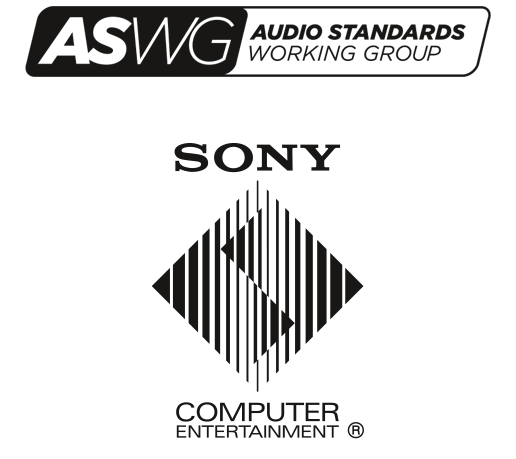 |
Sony Computer Entertainment Platforms | ||
| Loudness Type | ASWG-R001 Home | ||
| Integrated (I) | –24 LKFS (±2,0 LU) | ||
| True Peak (TPmax) | –1 dBTP | ||
| Reference: ASWG-R001 | |||
 |
Portable Sony Computer Entertainment Platforms | ||
| Loudness Type | ASWG-R001 Portable | ||
| Integrated (I) | –18 LKFS (±2,0 LU) | ||
| True Peak (TPmax) | –1 dBTP | ||
| Reference: ASWG-R001 | |||
 |
Amazon Alexa – Online Streaming | ||
| Loudness Type | Amazon | ||
| Integrated (I) | –14 LUFS | ||
| True Peak (TPmax) | –2 dBTP | ||
| Reference: Alexa Skills Kit | |||
| Amazon, Alexa and all related logos are trademarks of Amazon.com, Inc. or its affiliates. | |||
 |
Amazon Music – Online Streaming | ||
| Loudness Type | Amazon Music | ||
| Integrated (I) | –14 LUFS | ||
| True Peak (TPmax) | –2 dBTP | ||
| Reference: Alexa Skills Kit | |||
| Amazon, Alexa and all related logos are trademarks of Amazon.com, Inc. or its affiliates. | |||
 |
Apple Music® – Online Streaming | ||
| Loudness Type | Apple Music | ||
| Integrated (I) | –16 LUFS (±1,0 LU) | ||
| True Peak (TPmax) | –1 dBTP | ||
| Reference: Apple Digital Masters | |||
| Apple, the Apple logo, Apple Music, iPod, iTunes, Mac, Macintosh, HomePod, AirPods and macOS are trademarks of Apple Computer, Inc., registered in the U.S. and other countries. iTunes Music Store is a service mark of Apple Computer, Inc., registered in the U.S. and other countries. | |||
 |
Apple Music® – Immersive Audio | ||
| Loudness Type | Apple Music Dolby Atmos | ||
| Integrated (I) | –18 LKFS (±1,0 LU) | ||
| True Peak (TPmax) | –1 dBTP | ||
| Reference: Section Immersive Audio Source Profile listed in Music Audio Content Profile of Apple’s iTunes Video and Audio Asset Guide 5.3.7 | |||
| Apple, the Apple logo, Apple Music, iPod, iTunes, Mac, Macintosh, HomePod, AirPods and macOS are trademarks of Apple Computer, Inc., registered in the U.S. and other countries. iTunes Music Store is a service mark of Apple Computer, Inc., registered in the U.S. and other countries. Dolby, Dolby Atmos and the double-D symbol are registered trademarks of Dolby Laboratories Licensing Corporation. |
|||
 |
Apple Podcasts® – Online Streaming | ||
| Loudness Type | Apple | ||
| Integrated (I) | –16 LKFS (±1,0 dB) | ||
| True Peak (TPmax) | –1 dBFS | ||
| Reference: Apple Podcasts Best Practices | |||
| Apple, the Apple logo, Apple Music, Apple Podcasts, iPod, iTunes, Mac, Macintosh, HomePod, AirPods and macOS are trademarks of Apple Computer, Inc., registered in the U.S. and other countries. iTunes Music Store is a service mark of Apple Computer, Inc., registered in the U.S. and other countries. | |||
 |
Deezer – Online Streaming | ||
| Loudness Type | Deezer | ||
| Integrated (I) | –15 LUFS | ||
| True Peak (TPmax) | –1 dBTP | ||
| Deezer and the Deezer logo are trademarks or registered trademarks of Deezer S. A., France | |||
 |
Disney Home Entertainment – Online Streaming | ||
| Loudness Type | ATSC A/85 | ||
| Integrated (I) | –27 LKFS (±2,0 LU) | ||
| True Peak (TPmax) | –2 dBTP | ||
| Please note: The Integrated (I) loudness is a speech-gated measurement or as it is also called a dialog intelligence based measurement. | |||
| Disney and the Disney logo are trademarks or registered trademarks of Disney Enterprises, Inc. for Walt Disney Studios Home Entertainment is a division of The Walt Disney Company. | |||
 |
HBO Home Office Box – Online Streaming | ||
| Loudness Type | ATSC A/85 | ||
| Integrated (I) | –27 LKFS (±2,0 LU) | ||
| True Peak (TPmax) | –2 dBTP | ||
| Please note: The Integrated (I) loudness is a speech-gated measurement or as it is also called a dialog intelligence based measurement. | |||
| HBO Home Box Office is a company and the HBO logo is a trademark of WarnerMedia Entertainment. | |||
 |
Netflix – Online Streaming | ||
| Loudness Type | Netflix | ||
| Integrated (I) | –27 LKFS (±2,0 LU) | ||
| True Peak (TPmax) | –2 dBTP | ||
| Reference: Netflix Sound Mix Specifications | |||
| Please note: Netflix Integrated (I) loudness is a speech-gated measurement or as it is also called a dialog intelligence based measurement. Netflix recommends a Program Loudness Range between 4 and 18 LU and a Dialog Loudness Range of 7 LU or less. |
|||
| Netflix and the Netlix logo are trademarks or registered trademarks of Netflix Inc., U. S. | |||
 |
Spotify – Online Streaming | ||
| Loudness Type | Spotify Loud | ||
| Integrated (I) | –11 LUFS | ||
| True Peak (TPmax) | –2 dBTP | ||
| Reference: Spotify for Artists | |||
| Spotify and the Spotify logo are trademarks or registered trademarks of Spotify AB, Sweden | |||
 |
Spotify – Online Streaming | ||
| Loudness Type | Spotify | ||
| Integrated (I) | –14 LUFS | ||
| True Peak (TPmax) | –1 dBTP | ||
| Referenz: Spotify for Artists | |||
| Spotify and the Spotify logo are trademarks or registered trademarks of Spotify AB, Sweden | |||
 |
STARZ – Online Streaming | ||
| Loudness Type | ATSC A/85 | ||
| Integrated (I) | –27 LKFS (±2,0 LU) | ||
| True Peak (TPmax) | –2 dBTP | ||
| Please note: The Integrated (I) loudness is a speech-gated measurement or as it is also called a dialog intelligence based measurement. | |||
| STARZ and the STARZ logo are trademarks of Starz Entertainment, LLC, U. S. | |||
 |
Tidal – Online Streaming | ||
| Loudness Type | Tidal | ||
| Integrated (I) | –14 LUFS | ||
| True Peak (TPmax) | –1 dBTP | ||
| Tidal and the Tidal logo are trademarks or registered trademarks of Aspiro AB, New York | |||
 |
YouTube – Online Streaming | ||
| Loudness Type | YouTube | ||
| Integrated (I) | –14 LUFS | ||
| True Peak (TPmax) | –1 dBTP | ||
| YouTube and the YouTube logo are trademarks or registered trademarks of Google Ireland Limited | |||
Europe
|
|||
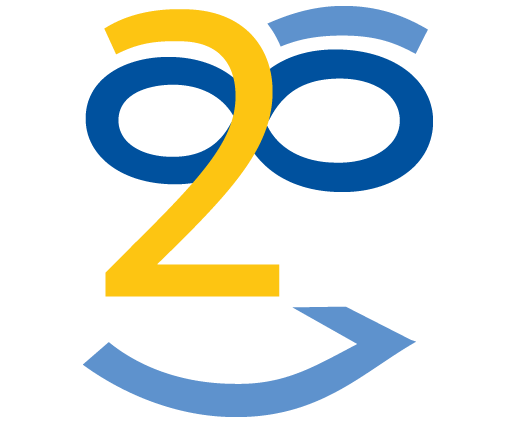 |
General TV Broadcast | ||
| Standard | EBU R128 | ||
| Integrated (I) Live | –23 LUFS (±1.0 LU) | ||
| Integrated (I) QC | –23 LUFS (±0.2 LU) | ||
| True Peak (TPmax) | –1 dBTP (±0.3 dB) | ||
| Reference: EBU R128 | |||
 |
Advertisement TV Broadcast | ||
| Standard | EBU R128 s1 | ||
| Integrated (I) | –23 LUFS (±0,5 LU) | ||
| Short Term (Smax) | –18 LUFS | ||
| True Peak (TPmax) | –1 dBTP | ||
| Reference: EBU R128 s1 | |||
 |
Streaming in Broadcast | ||
| Standard | EBU R128 s2 | ||
| Integrated (I) | –23 LUFS* | ||
| Integrated (I) | –20 to –16 LUFS° | ||
| True Peak (TPmax) | –1 dBTP | ||
| * Reference: EBU R128-2020 and EBU R128 s2 | |||
| ° Interim Distribution Loudness – Reference: EBU R128 s2 | |||
 |
Radio Broadcast | ||
| Standard | EBU R128 s3 | ||
| Integrated (I) | –23 LUFS* | ||
| Integrated (I) | –20 to –16 LUFS° | ||
| True Peak (TPmax) | –1 dBTP | ||
| * Production and Program Exchange – Reference: EBU R128-2020 and EBU R128 s2 | |||
| ° Inconsistent Use – Reference: EBU R128 s3 | |||
| Please note: MPX limitation in some countries ITU-R BS.412 and EBU Tech 3344 |
|||
Germany
|
|||
 |
TV advertisement spots in Germany | ||
| Standard | EBU R128 | ||
| Integrated (I) | –23 LUFS/0 LU | ||
| Short Term (Smax) | –20 LUFS/+3 LU | ||
| Momentary (Mmax) | –15 LUFS/+8 LU | ||
| True Peak (TPmax) | –1 dBTP | ||
| Reference: ZDF-Werbefernsehen | |||
 |
TV Arte | ||
| Standard | EBU R128 | ||
| Integrated (I) | –23 LUFS* | ||
| True Peak (TPmax) | –1 dBTP | ||
| Reference: ARTE G.E.I.E. | |||
| * For live content, a tolerance of ±1 LU is allowed. | |||
| Please note: For trailers < 2 minutes: The maximum Short Term value (Smax) must not exceed –20 LUFS. | |||
United States of America
|
|||
 |
General TV Broadcast | ||
| Standard | ATSC A/85 | ||
| Integrated (I) | –24 LKFS (±2,0 LU) | ||
| True Peak (TPmax) | –2 dBTP | ||
| Reference: ATSC A/85 | |||
| Public Radio Satellite System® (PRSS) | |||
| Standard | PRSS Audio Loudness | ||
| Integrated (I) | –24 LUFS (±2,0 LU) | ||
| True Peak (TPmax) | –2 dBTP | ||
| Reference: PRSS Audio Loudness Standard | |||
| Scandinavia (Denmark, Finland, Iceland, Norway, Sweden) | |||
 |
General TV Broadcast | ||
| Standard | EBU R128 | ||
| Integrated (I) | –23 LUFS* | ||
| True Peak (TPmax) | –1 dBTP | ||
| * For live content, a tolerance of ±1 LU is allowed. | |||
 |
Advertisement | ||
| Standard | EBU R128 | ||
| Integrated (I) | –23 LUFS* | ||
| Short Term (Smax) | –20 LUFS | ||
| Momentary (Mmax) | –15 LUFS | ||
| Max. Loudness Range | 20 LU | ||
| True Peak (TPmax) | –3 dBTP | ||
| * For live content, a tolerance of ±1 LU is allowed. | |||
Denmark
|
|||
 |
DR | ||
| Standard | EBU R128 | ||
| Integrated (I) | –23 LUFS (±1,0 LU) | ||
| True Peak (TPmax) | –1 dBTP | ||
 |
TV2 | ||
| Standard | EBU R128 | ||
| Integrated (I) | –23 LUFS (±1,0 LU) | ||
| True Peak (TPmax) | –3 dBTP | ||
| Reference: Technical Specifications | |||
| Please note: Be aware of special requirements for the first and last 2 minutes of a production | |||
Norway
|
|||
 |
NRK | ||
| Standard | EBU R128 | ||
| Integrated (I) | –23 LUFS* | ||
| Max. Loudness Range | 18 LU (1)(2) | ||
| True Peak (TPmax) | –3 dBTP (3) | ||
| Reference: NRK Technical Standards | |||
| * For live content, a tolerance of ±1 LU is allowed. | |||
| Please note: (1) LRA: Programmes should aim for an LRA of no more than 18 LU
(2) LRA Speech: Speech content in factual programmes should aim for an LRA of no more than 6 LU. A minimum separation of 4 LU between dialogue and background is recommended. (3) TPMax: –3 dBTP Recommended. Programmes are deemed to have failed QC if level exceeds –1 dBTP. |
|||
 |
TV 2 | ||
| Standard | EBU R128 | ||
| Integrated (I) | –23 LUFS* | ||
| Max. Loudness Range | 18 LU | ||
| True Peak (TPmax) | –3 dBTP | ||
| Reference: HD Delivery for TV 2 AS | |||
| * For live content, a tolerance of ±1 LU is allowed. | |||
Great Britain
|
|||
 |
BBC, BTSport, Channel 4, Channel 5, ITV, Sky, S4C, TG4 | ||
| Standard | EBU R128 | ||
| Integrated (I) | –23 LUFS (±1,0 LU)* | ||
| True Peak (TPmax) | –1 dBTP | ||
| Reference: Technical Delivery Standards | |||
| * For live content, a tolerance of ±2 LU is allowed. | |||
BeNeLux Countries
|
|||
 |
Belgium, The Netherlands, Luxembourg | ||
| Standard | EBU R128 | ||
| Integrated (I) | –23 LUFS (±0,5 LU) | ||
| Momentary (Mmax) | –15 LUFS | ||
| True Peak (TPmax) | –1 dBTP | ||
The Netherlands
|
|||
 |
Advertisement | ||
| Standard | EBU R128 s1 | ||
| Integrated (I) | –23 LUFS (±0,5 LU) | ||
| Short Term (Smax) | +5 LU | ||
| True Peak (TPmax) | –1 dBTP | ||
| Reference: Ster Technical Specifications | |||
Belgium
|
|||
 |
rmb Belgium | ||
| Standard | EBU R128 | ||
| Integrated (I) | –23 LUFS* | ||
| Momentary (Mmax) | –15 LUFS | ||
| True Peak (TPmax) | –1 dBTP | ||
| Referenz: Conditions Téchniques | |||
| * For live content, a tolerance of ±1 LU is allowed. | |||
 |
TV RTBF Belgium | ||
| Standard | EBU R128 | ||
| Integrated (I) | –23 LUFS* | ||
| Max. Loudness Range | 20 LU | ||
| True Peak (TPmax) | –1 dBTP | ||
| Referenz: Spécifications PAD à la RTBF | |||
| * For live content, a tolerance of ±1 LU is allowed. | |||
France
|
|||
 |
TV Broadcast France | ||
| Standard | EBU R128 | ||
| Integrated (I) | –23 LUFS* | ||
| Max. Loudness Range | 20 LU | ||
| True Peak (TPmax) | –3 dBTP | ||
| Referenz: CST-RT-017-TV-v3.0 | |||
| * For programs longer than 2 minutes, a tolerance of ±1 LU is allowed. | |||
Switzerland
|
|||
 |
TV Switzerland SRF | ||
| Standard | EBU R128 | ||
| Integrated (I) | –23 LUFS (±0,5 LU)* | ||
| Max. Loudness Range | 20 LU | ||
| Reference: Technical recommendation SRG SSR | |||
| * For live content, a tolerance of ±1 LU is allowed. | |||
Austria
|
|||
 |
TV Austria ORF | ||
| Standard | EBU R128 | ||
| Integrated (I) | –23 LUFS (±0,5 LU)* | ||
| Max. Loudness Range | 15 LU | ||
| True Peak (TPmax) | –1 dBTP | ||
| Reference: Technical Requirements ORF | |||
| * For live content, a tolerance of ±1 LU is allowed. | |||
 |
Advertisement TV Austria ORF | ||
| Standard | EBU R128 | ||
| Integrated (I) | –23 LUFS (±0,5 LU) | ||
| Short Term (Smax) | –18 LUFS/+5 LU | ||
| True Peak (TPmax) | –3 dBTP | ||
| Reference: Technical Requirements ORF Enterprise | |||
Italy
|
|||
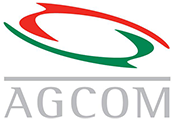 |
General TV-Broadcast | ||
| Standard | AGCOM 219/09/CSP | ||
| Reference: AGCOM 219/09/CSP | |||
| Please note: There is no absolute Target Loudness Level (I) in Italy at this time. Advertising and promos are monitored on a channel basis and must not exceed +1 LU from a very long term average channel loudness measurement (120 h sliding window). The Loudness measure is performed with a relative gate of –8 LU. The analysis window can be set in the range from 300 ms to 1000 ms. | |||
 |
Advertisement | ||
| Standard | AGCOM 219/09/CSP | ||
| Integrated (I) | –24 LUFS | ||
| Short Term (Smax) | –15 LUFS | ||
| True Peak (TPmax) | –2 dBTP | ||
| Reference: Discovery Media, AdStream, IMD, Adtoox Specifications | |||
Portugal
|
|||
 |
Portugal | ||
| Standard | EBU R128 | ||
| Integrated (I) | –23 LUFS* | ||
| Short Term (Smax) | –18 LUFS | ||
| True Peak (TPmax) | –1 dBTP | ||
| * For live content, a tolerance of ±1 LU is allowed. | |||
Malta
|
|||
 |
Malta | ||
| Standard | EBU R128 | ||
| Integrated (I) | –23 LUFS* | ||
| Momentary (Mmax) | –15 LUFS | ||
| True Peak (TPmax) | –12 dBTP | ||
| * For live content, a tolerance of ±1 LU is allowed. | |||
Slovakia
|
|||
 |
Slovakia | ||
| Standard | EBU R128 | ||
| Integrated (I) | –23 LUFS* | ||
| Short Term (Smax) | –20 LUFS | ||
| Momentary (Mmax) | –15 LUFS | ||
| Max. Loudness Range | 15 LU | ||
| True Peak (TPmax) | –1 dBTP | ||
| * For live content, a tolerance of ±1 LU is allowed. | |||
Romania
|
|||
 |
General TV Broadcast | ||
| Standard | EBU R128 | ||
| Integrated (I) | –23 LUFS* | ||
| Short Term (Smax) | –20 LUFS | ||
| Momentary (Mmax) | –15 LUFS | ||
| Max. Loudness Range | 20 LU | ||
| True Peak (TPmax) | –3 dBTP | ||
| * For live content, a tolerance of ±1 LU is allowed. | |||
| Please note: AXN (Animax, Black, Crime, Sci Fi, White), Boomerang, History & TCM have a –10 dBTP restriction with EBU R128 in place. | |||
Czech Republic, Poland, Estonia
|
|||
 |
Czech Republic, Poland, Estonia | ||
| Standard | EBU R128 | ||
| Integrated (I) | –23 LUFS (±0,5 LU) | ||
| Momentary (Mmax) | –15 LUFS | ||
| True Peak (TPmax) | –1 dBTP | ||
Latvia, Lithuania
|
|||
 |
Latvia, Lithuania | ||
| Standard | EBU R128 | ||
| Integrated (I) | –23 LUFS* | ||
| Short Term (Smax) | –20 LUFS | ||
| Momentary (Mmax) | –15 LUFS | ||
| Max. Loudness Range | 20 LU | ||
| True Peak (TPmax) | –3 dBTP | ||
| * For live content, a tolerance of ±1 LU is allowed. | |||
Russian Federation
|
|||
 |
Russian Federation | ||
| Standard | EBU R128 | ||
| Integrated (I) | –23 LUFS* | ||
| Short Term (Smax) | –20 LUFS | ||
| Momentary (Mmax) | –15 LUFS | ||
| True Peak (TPmax) | –12 dBTP | ||
| * For live content, a tolerance of ±1 LU is allowed. | |||
China TV for Digital Broadcast
|
|||
 |
CCTV TV Broadcast | ||
| Standard | GY/T 282-2014 | ||
| Integrated (I) | –24 LKFS (±2,0 LU) | ||
| True Peak (TPmax) | –2 dBTP | ||
| Reference: ITU-R BS.1770-4 | |||
Japan
|
|||
 |
General TV Broadcast | ||
| Standard | ARIB TR-B32 | ||
| Integrated (I) | –24 LKFS | ||
| True Peak (TPmax) | –1 dBTP | ||
| Reference: ARIB TR-B32 | |||
Australia
|
|||
 |
General TV Broadcast | ||
| Standard | OP-59 | ||
| Integrated (I) | –24 LKFS (±1,0 LU) | ||
| True Peak (TPmax) | –2 dBTP | ||
| Reference: Free TV Operational Practice | |||
 |
ABC TV | ||
| Standard | ATSC A/85, CALM Act | ||
| Integrated (I) | –24 LKFS (±2 dB) | ||
| Maximaler Pegel | –6 dBFS | ||
| Reference: Technical Specifications | |||
New Zealand
|
|||
 |
General TV Broadcast | ||
| Standard | OP-59 | ||
| Integrated (I) | –24 LKFS (±1,0 LU) | ||
| True Peak (TPmax) | –2 dBTP | ||
| Reference: Free TV Operational Practice | |||
Canada
|
|||
 |
General TV Broadcast | ||
| Standard | ATSC A/85 | ||
| Integrated (I) | –24 LKFS (±2,0 LU) | ||
| True Peak (TPmax) | –2 dBTP | ||
| Reference: ATSC A/85 | |||
Puerto Rico
|
|||
 |
General TV Broadcast | ||
| Standard | ATSC A/85 | ||
| Integrated (I) | –24 LKFS (±2,0 LU) | ||
| True Peak (TPmax) | –2 dBTP | ||
| Reference: ATSC A/85 | |||
Brazil
|
|||
 |
Brazil | ||
| Standard | EBU R128 | ||
| Integrated (I) | –23 LUFS* | ||
| Maximaler Pegel | –12 dBFS | ||
| * For live content, a tolerance of ±1 LU is allowed. | |||
South Africa
|
|||
 |
South Africa | ||
| Standard | EBU R128 | ||
| Integrated (I) | –23 LUFS* | ||
| True Peak (TPmax) | –3 dBTP | ||
| Reference: SABC Technical Standards | |||
| * For live content, a tolerance of ±1 LU is allowed. | |||
